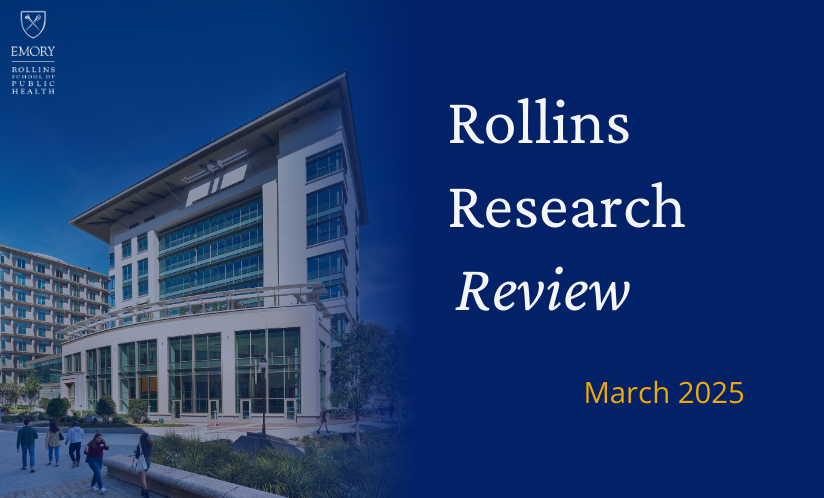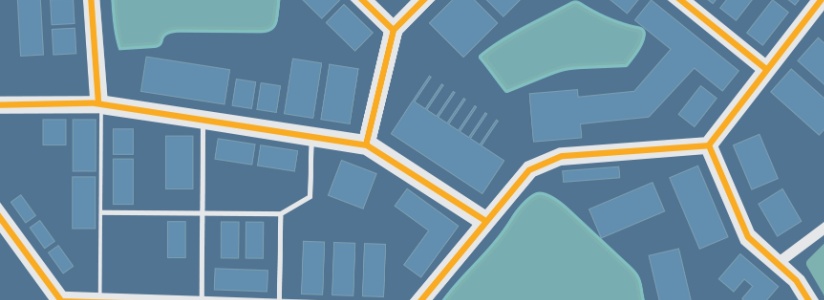Rollins Research Review: MRSA Infection Risk in the U.S., Dust Storms and ER Visits, Stunting in Low- and Middle-Income Countries, and Telehealth Use for Mental Health

Last month, Rollins researchers authored papers on a wealth of public health topics. Find summaries of a few highlights below.

Title: Neighborhood-Level Income and MRSA Infection Risk in the USA: Systematic Review and Meta-Analysis
Journal: BMC Public Health
Rollins Author: Maya Nadimpalli, PhD
Important Takeaways:
- Previous research has shown that social factors like socioeconomic status, race, and living conditions are related to an individual’s risk of acquiring methicillin-resistant Staphylococcus aureus (MRSA), a common and often deadly infection.
- A team of researchers performed an analysis of previous studies to see if neighborhood-level income—which can have a large impact on health care access, health behaviors, and living conditions—affects MRSA risk.
- The analysis supported an association between lower neighborhood income and higher MRSA risk—but the small number of studies included and the differences in their measures of neighborhood income and MRSA prevalence mean that further research is needed to explore this association.
 Title: Dust Storms and Emergency Department Visits in Three Southwestern States Using NWS Storm Reports
Title: Dust Storms and Emergency Department Visits in Three Southwestern States Using NWS Storm Reports
Journal: JAMA Network Open
Rollins Authors: Xiaping Zheng; Howard Chang, PhD; Stefanie Ebelt, ScD; Rohan D’Souza
Important Takeaways:
- Dust storms are common in the U.S. Southwest and are becoming more frequent as climate change increases temperatures and prolongs periods of drought in the region. Dust storms can also pose health risks.
- In this study, a Rollins team looked at dust storms and emergency department visits over a 13-year period in Arizona, California, and Utah to find out if dust storms influenced health outcomes.
- They found that dust storms increased emergency department visits for motor vehicle accidents, asthma, and congestive heart failure.
- Communicating about the risks of dust storms, and how to avoid them, could help people take steps to protect their health on days when dust storms are forecasted.
 Title: Co-Occurrence of Stunting and Off-Track Early Child Development in Low- and Middle-Income Countries
Title: Co-Occurrence of Stunting and Off-Track Early Child Development in Low- and Middle-Income Countries
Journal: JAMA Network Open
Rollins Author: Joshua Jeong, ScD
Important Takeaways:
- In recent decades, children in low- and middle-income countries (LMICs) are surviving more often, but they are not necessarily thriving or reaching their full health and development potential. Stunting (low height for age) and off-track early childhood development are two ways to measure thriving in young children.
- Researchers used health survey information from 41 LMICs to understand the landscape of children who are at risk of not thriving and what factors might put a child at risk of stunting or off-track development.
- The study showed that about 1 in 6 children in LMICs are at risk of having both stunting and off-track development, and children more frequently had both in poorer households, rural settings, low-income countries, and when their mothers had a lower education level.
- The frequency of stunting and off-track development appearing together and the socioeconomic factors that often accompany them support a multidisciplinary approach to improving children’s thriving worldwide.
 Title: Racial and Ethnic Disparities in Telemental Health Use Among Publicly Insured Children
Title: Racial and Ethnic Disparities in Telemental Health Use Among Publicly Insured Children
Journal: The American Journal of Managed Care
Rollins Authors: Xin Hu, PhD; Ilana Graetz, PhD; Xu Ji, PhD; Janet Cummings, PhD
Important Takeaways:
- By necessity, the COVID-19 pandemic increased the number of people using telehealth for medical care, including mental health services.
- Rollins researchers used national data on telemental health usage prior to COVID-19 and after the beginning of the pandemic to measure the difference in telehealth usage for children’s mental health services at both time points.
- There was a 12-fold increase in telemental health services for publicly insured children after the COVID-19 pandemic began, but existing gaps in usage between racial and ethnic groups widened. White children had the greatest baseline level of telemental health service usage pre-pandemic and also increased their usage by the highest margin.
- It is important to do further research to understand the root causes of this gap and take steps to ensure equitable access to mental health care.